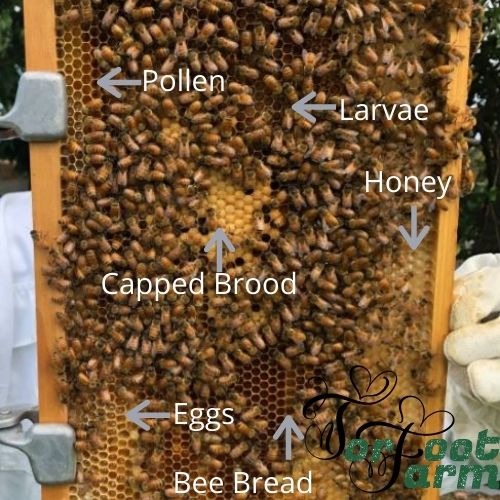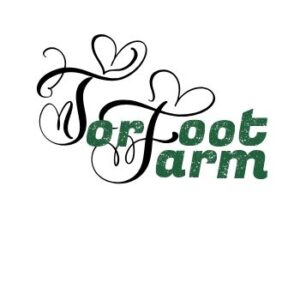
Just as we are stronger and more resilient when we are healthy and have the correct proportions of vitamins, minerals, rest and exercise so too are bees. Bees require access to adequate amounts of nutritious food in order to build strong colonies that are able to defend against pests, fight disease and raise young. In that way we are alike. What then can we do as Bee Carers to assist our bees to be in tip top condition.
Hive Materials
There is a lot that goes into a hive from a beekeepers point of view and many of the items can be somewhat expensive. So it stands to reason that some might be tempted to take some short cuts or accept a second hand item but this can be fraught with danger and disease.
If you are planning to accept hive boxes, bee suits and other equipment secondhand check to see if the previous owner has had these items properly treated to reduce the risk of disease spread. Does the previous owner keep hive inspection records and follow best practice management techniques? Can they show you these? You will very quickly get a feel for the apiarist practices if you take the time to visit before purchasing second hand equipment – it may save you a lot of heart ache and expense down the line.
Hive bodies, roofs and bases should be clean with no sign of left behind beeswax or other bee products. The same goes for hive tools, honey extractors and clothing that might be offered second hand. If in doubt it is better to walk away having lost a bargain than to later lose your entire colony.
Purchasing new equipment is often the better option. You can then ensure that it is correctly treated and painted before installing your bees. Many companies offer pretreated bee hive options or you can talk with your local beekeeping club for further advise.
Sterilising hives that have been previously used is a specialty practice that requires radiation of the wooden pieces. It cannot be done at home. Bleach washes will not provide the same level of protection as irradiation and in many cases is illegal (depending on state or country), don’t be fooled into thinking you or someone else can do it on the cheap. This is definately one area that is a no no for the DIYer.
Companies such as Steritech are one of many gamma irradiation experts. Diseases such as American Foul Brood, European Foul Brood, Nosema and more have been successfully treated to allow beekeepers to reuse the hive materials after a infestation. This has played a huge role in reducing the cost to commercial apiaries around the world as previously all these hive components would have had to be burned and destroyed.
Hive Inspections
Inspecting your hive regularly is a key component in maintaining a healthy hive but how often is regularly?
Many amateur beekeepers get into caring for their bees with the best of intentions but life gets in the way. I personally have been called out numerous times to assist with a hive that has been abandoned or simply forgotten only for someone else to find at a later date. This is a shame as beekeeping is so rewarding but understandably not for everyone.
Inspections of your bee hive should be programmed into your calendar at or before the start of each season. One simple method is to set a recurring appointment in your phone every 2 – 4 weeks from the beginning of spring to the end of autumn or first frost in your area. If you live in a more tropical area you will not have a winter shutdown and will need to programme your inspections for the entire year.
That said you should also keep clear records of each inspection on every hive. It need not be elaborate but should include the hive identifier (eg number, colour or location), the date and time, a space to record your findings and a space to record your next planned inspection and any tasks to complete.

Hive Health
As previously suggested we need to be inspecting our hives regularly and keeping track of their overall health. This means knowing what can affect them such as diseases and pests, how to identify and what to do in the event. But more than that we need to understand that a healthy hive needs certain resources to remain healthy.
A strong healthy hive will pretty much take care of itself but it helps to know what that actually looks like.
A healthy hive will have a good queen that is laying in a nice orderly fashion. Eggs and larvae should be seen in the brood area at each inspection and while it is fine for there to be some empty cells there should not be a broken sparse pattern to the capped brood.
The image below shows a healthy brood pattern with capped brood, some open cells for continued laying, beebread, pollen, eggs, larvae and honey all on one frame. There is also plenty of bees available to tend to the frame of brood. This allows the nurse bees to feed and care for the young larvae as well as themselves and the queen.

Supplementary Feeding
Sometimes through no fault of the beekeeper things go awry. At times during extended periods of drought or wet inclemint weather the bees are not able to forage and so they start to consume the resources they have gathered over the preceding period to survive. This means they can quickly run out of food. At times like this we need to provide a little extra support in the form of supplementary feeding.
There are many types and ways to do this. I am not going to go into an exhaustive list here but most beekeepers have at one time or another needed to feed thier bees in order to keep them alive and healthy. This is usually done with a sugar syrup or pollen patties. Increasingly though we are learning that sugar syrup alone is not enough for the bees. They like us need more than just carbohydrates.
I have this week been introduced to a product made from seaweed that has been specifically designed to supplement all the natural vitamins, minerals and amino acids that bees need during periods of feeding. Scientific studies have proven an up to 80% increase in hive health by adding just 20ml of this product per litre of sugar water fed.
I am currently reviewing this information and trialling the product so do check back when I report on the findings but I am extremely interested in this completely natural chemical free product to support bees in times of feeding.
So there you have it keeping your bees in prime condition will have them producing and thriving for years to come and you will be rewarded by bees sharing their bounty with you. Remember to always leave enough food for them no matter what calamity befalls them or you. Happy bee keeping and please do check our other articles on Bees and of course our lovely Belted Galloways.
Should you wish to learn more about bees why not pop over to our Bee Caring Page and drop us a message. We love to hear from you.
